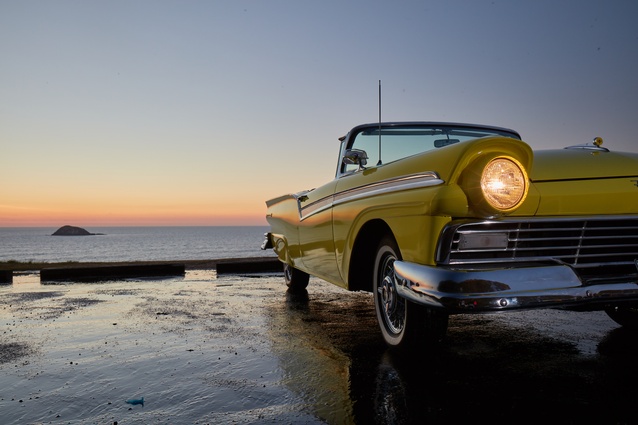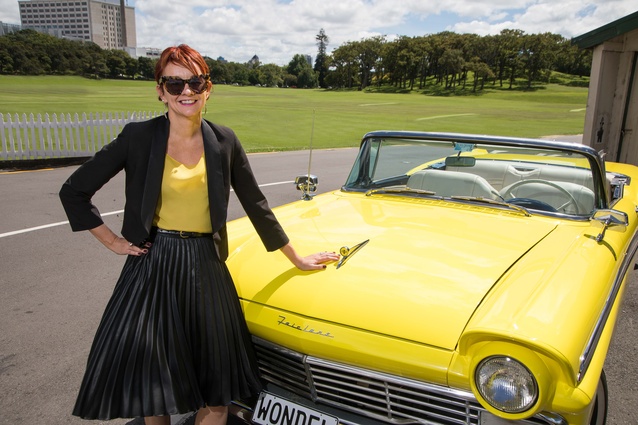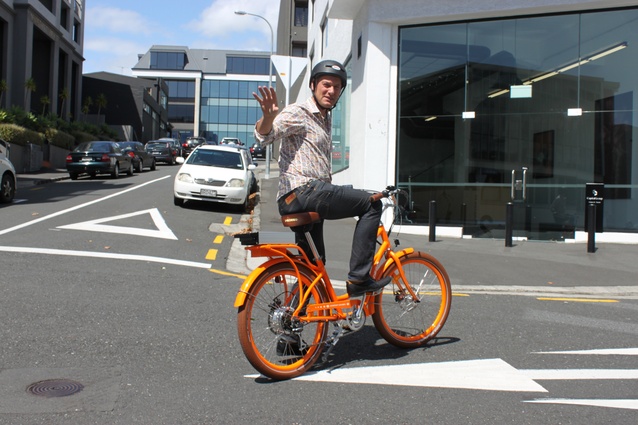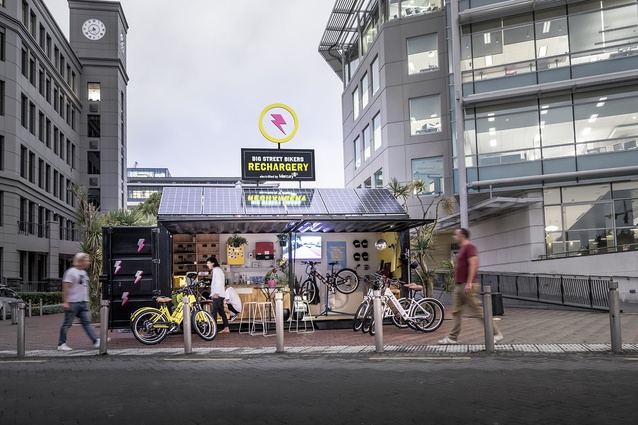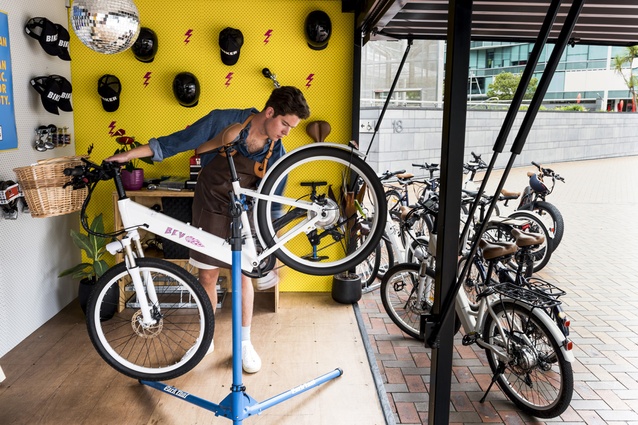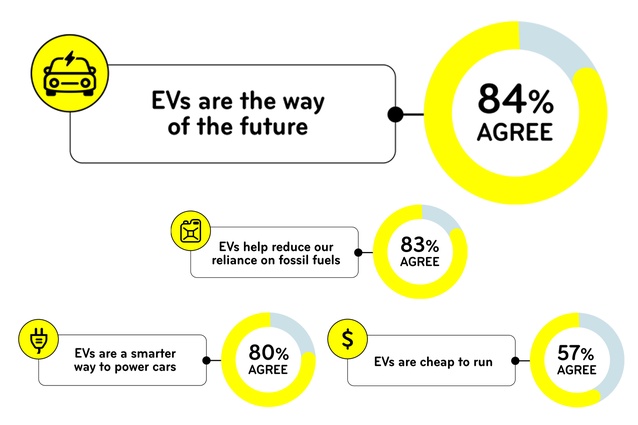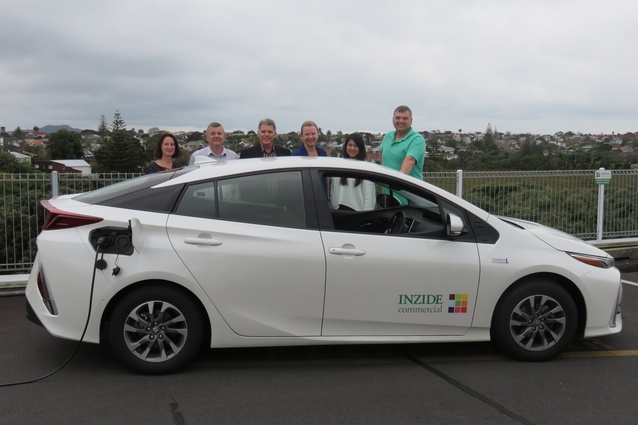‘The way of the future’: E-mobility
Transport is one of the largest sources of greenhouse gas emissions in New Zealand; what alternatives to petrol cars can companies explore when it comes to their transport needs?
Maybe because of the nature of their work, professionals in the built environment are often acutely aware of the need for sustainable practices. Many companies in the architecture and design industry are, consciously or unconsciously, choosing more environmentally friendly processes and products.
One of these companies, Inzide Commercial, recently told us about their journey with using hybrid vehicles. Managing director Steve Aschebrock said, “We have calculated that our fleet of 7 to 11 hybrids – we have had hybrids for 12 years now – has saved us over 100,000 litres of fuel versus the standard car.” Not only do hybrid vehicles save on fuel costs, they save the earth from harmful carbon emissions and assist with the carboNZero commitments.
The Unites States Environmental Protection Agency reports that the typical passenger vehicle emits about 4.6 metric tonnes of carbon dioxide per year(1). In New Zealand, transport is one of the largest sources of greenhouse gas emissions, according to the Ministry for the Environment.
“[Transport] is one of the easy ones to tackle,” says Julia Jack, chief marketing officer at Mercury. “We know that agriculture is also a big part of emissions, but that’s a much harder challenge to solve.”
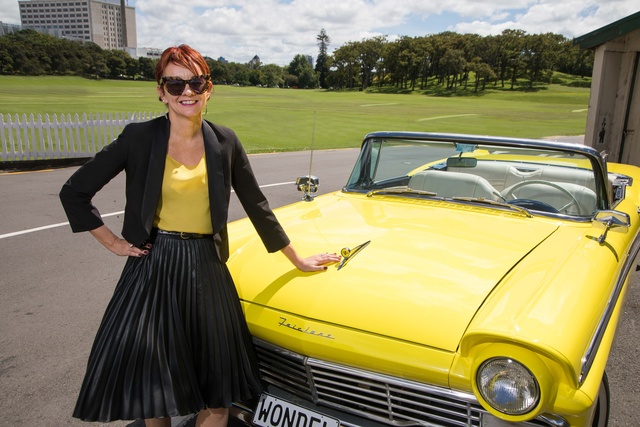
Aside from providing consumers with electricity from 100 per cent renewable resources, Mercury has been working hard to spread awareness and drive action regarding electric vehicle (EV) use in New Zealand. The company has converted 70 per cent of their own fleet into EVs and they offer discounted energy prices from 9pm to 7am to electric vehicle owners. They have even converted a 1957 Ford Fairlane to electric, an effort to make e-transport ‘sexy’.
“I think the whole e-mobility conversation has really gained momentum. It has become a part of the story, particularly for Auckland, to get cars off the streets. But also, to free humans up from the costs of fuel – which is very topical at the moment – and parking and from the congestion and everything else,” Jack says.
“It’s all sort of coming together as a ‘perfect storm’, if you will. It’s creating the tipping point for really seeing a strong uptake of EVs.” She outlines several different alternatives to individual petrol car ownership from choosing to purchase an electric car to joining a car-share program like Cityhop or even hopping on an e-bike.
On the business-to-business side, Mercury – along with Air New Zealand and Westpac – has gathered more than 30 of New Zealand’s largest organisations to commit to converting at least 30 per cent of their fleets to electric by 2019. They state that this will boost the country’s EV numbers by 75 per cent.
Mercury’s goal with this commitment is “more about trying to tell our story about fleet conversion and what we did and barriers we’ve overcome and getting those other companies to make a commitment,” Jack says. “Once you’ve made the commitment, there’s peer pressure and you have to actually deliver on it.”
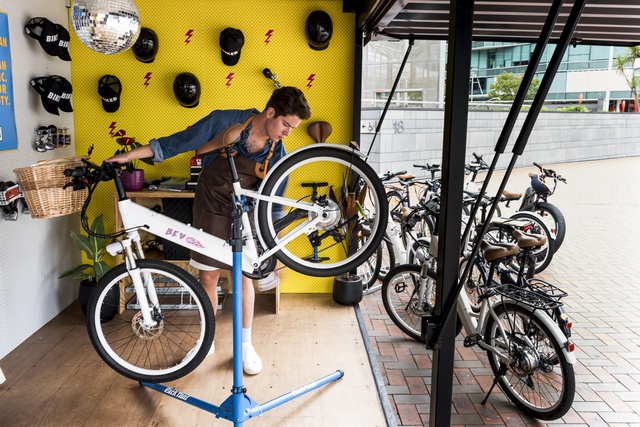
The energy company has certainly reaped the benefits of their own fleet conversion. Mercury reports that they have seen a 41 tonne reduction in fleet emissions since switching to electric, and this number is expected to grow as more of their fleet is converted.
They also save greatly in fuel costs: the average cost of a trip from their Newmarket office to the Hamilton office in a Nissan LEAF is $3, compared to $18 in a similar-sized petrol car. Employees also spend less time fueling up by simply plugging their vehicle in at the office when they return.
Besides electric vehicles, e-bikes are becoming an increasingly viable option for alternative transport, both for individuals and companies. One Auckland company, Big Street Bikers, based in Wynyard Quarter, is aiming to get 10,000 electric bikes on to the roads by 2020.
Big Street Bikers has designed their business to be as accessible as possible to companies of any size. They have an annual subscription service that includes fleet management software, Bluetooth locking, bike storage, maintenance and, sometimes, even branded bikes.
Andrew Charlesworth, spokesperson for Big Street Bikers, said to EVtalk, “We’re also empowering organisations and individuals to do something about the congestion problem rather than complaining and waiting for the government.”
“Big Street Bikes are cheaper than the bus, faster than sitting in traffic and, most importantly, much better for your booty,” he continues.
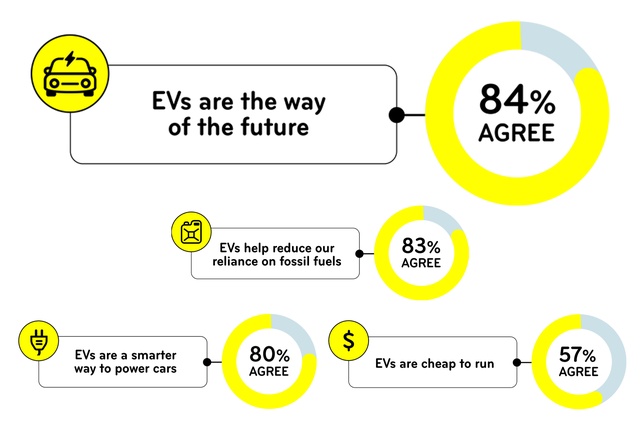
New Zealanders seem to be in agreement that e-mobility is the way forward – specifically, 84 per cent of New Zealanders agree that “EVs are the way of the future,” according to Mercury research. That same research also found that 46 per cent of adult New Zealanders would consider getting an EV in the next two years.
With those figures in mind, designing homes and workplaces with longevity will surely require consideration of alternative transport options. Beyond that, Jack notes, “More and more it’s not just about what you as a business want from a sustainability perspective, it’s about what your customers expect from you and about what people who are coming to work for you expect from you as well.
“If you want to attract the best talent, have the best story for your customers, as well as do the right thing as a business, then offering alternative transport options or converting your fleet to electric is a really big step you can take towards reducing your footprint and being a more sustainable company.”
Some of the country’s largest architecture and design firms are taking steps towards a higher degree of e-mobility with Warren and Mahoney touting branded e-bikes around Auckland and Jasmax offering their staff many alternative transport solutions including a corporate account with Cityhop and AT Hop cards available to staff who want to utilise public transport. But how can your firm benefit from rethinking its transportation?
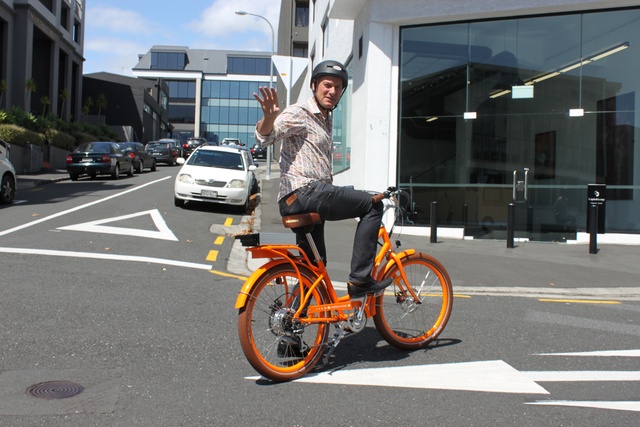
“The business case for most people absolutely makes sense. It’s the equivalent of 30 cents a litre in fuel to drive an EV, and, with the much smaller number of moving parts in an EV, maintenance costs are brought right down as well,” Jack says.
Jack notes that lack of prioritisation and lack of knowledge are often some of the biggest challenges facing companies when it comes to making their transportation more sustainable, particularly small to medium enterprises. That is why one of Mercury’s goals in getting people to join the conversation on e-mobility is to encourage the sharing of information and resources.
She says that there are options for all kinds of companies. “The opportunity for smaller companies is actually to rethink the whole model around their fleet. What is their level of fleet utilisation? Do they actually need a fleet? Could they go more into the car share, Cityhop type of set up?” Jack says.
“There’s also opportunities for people with bigger fleets to think about the reverse of that. When your fleet is not being utilised, is there an opportunity for you to create a car sharing initiative? We have a couple of Mercury cars that are part of the City Hop fleet. So, when we’re not using them, they can be used by the public,” she continues.
Win a test fleet from Big Street Bikers
We want to encourage companies in the architecture and design sector to join the discussion and rethink their transport options, so we’ve partnered with Big Street Bikers to help one firm win a fleet of three electric bikes for two weeks.
Fill out the form here and make sure to include your company name and you’ll be entered to win.

